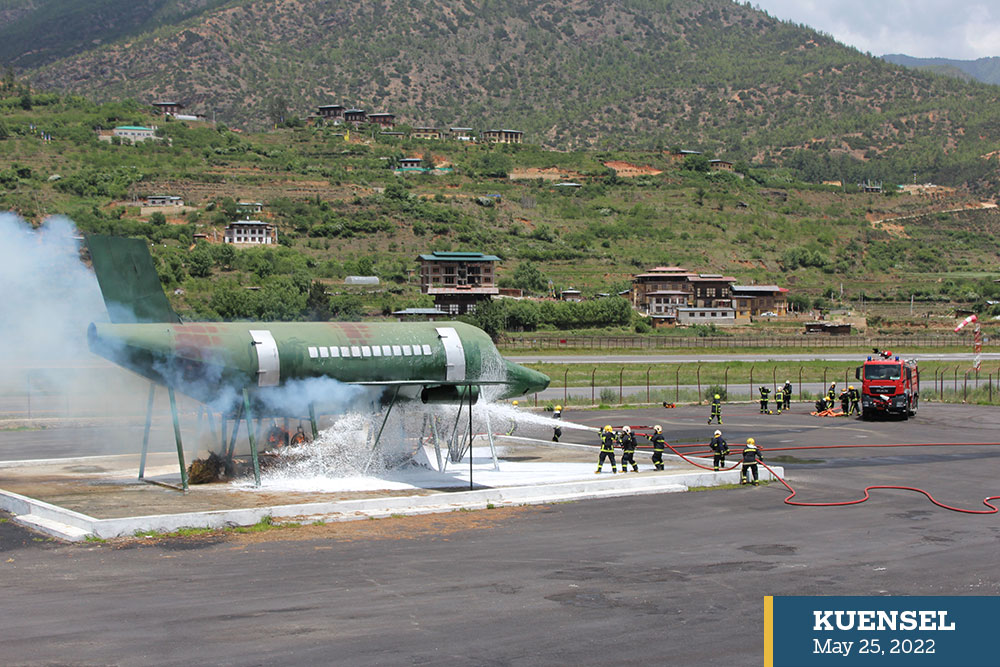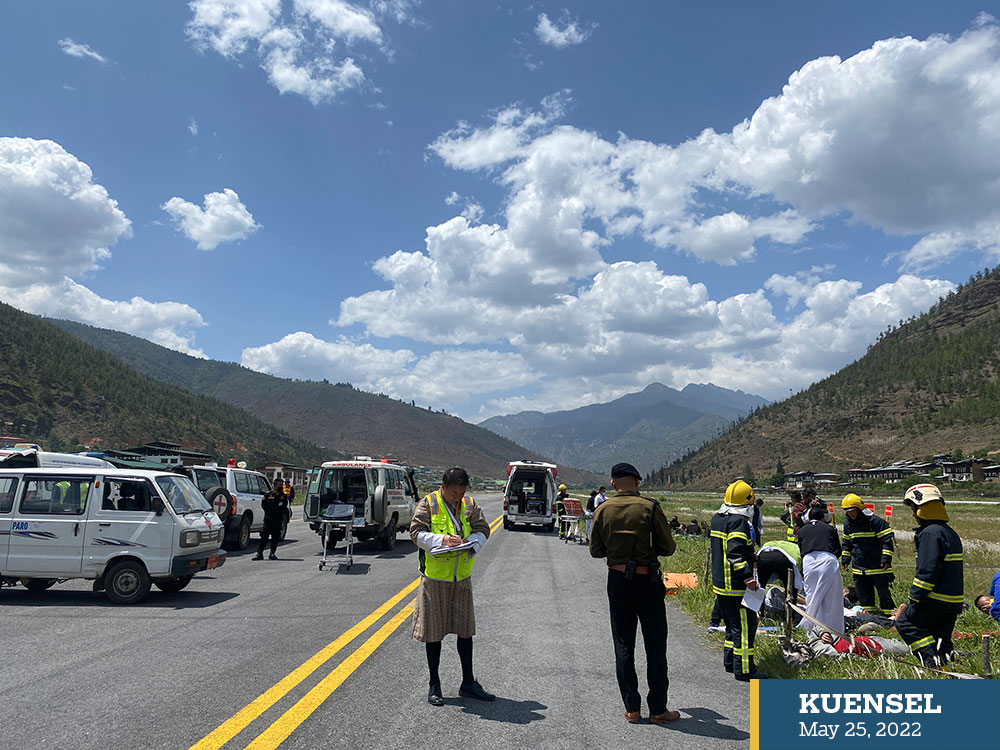Phub Dem | Paro
To ensure that the Aerodrome Emergency Plan (AEP) of Paro international airport is efficient, the Department of Air Transport in collaboration with agencies at the airport and Paro dzongkhag conducted the third full-scale aerodrome emergency exercise yesterday.
The International Civil Aviation Organisation (ICAO) mandates such full-scale exercise every alternate year. However, the exercise is being conducted after four years since it was delayed due to the pandemic.
The exercise saw officials from around 24 agencies such as Bhutan Civil Aviation Authority (BCAA), the airline operators, Royal Bhutan Police, Royal Bhutan Army, the dzongkhag administration, hospitals, and Royal Bhutan Helicopter Services Limited, and de-suups, among others.
A similar full-scale exercise was done in 2018.

Fire fighters putting out a fire on the plane
The full-scale exercise is to ensure that the procedures mentioned in the AEP are operationally effective by testing them during a simulated passenger aircraft crash following the AEP manual.
According to ICAO surveys in most accidents on or near airports, the majority of aircraft occupants survive and therefore AEP should be reviewed in consultation with all responsible agencies, to ensure that loss of life and suffering in the event of an accident, is minimised.
Director of Air Transport, Karma Wangchuk, said that AEP must be tested regularly to ensure effectiveness, given the complexity of the airport environment and the multiple agencies involved.
He said that frequent exercises allow agencies involved to revisit and revise the manual for effective implementation. “There has been lots of improvement compared to 2018. We could rectify the limitations of the past incidents as well.”
According to officials, such exercises highlighted potential gaps and limitations in the AEP; clarify the role and responsibilities of agencies involved, and improved incident coordination.
Besides, such exercise would ensure the adequacy of the response of all personnel involved by the emergency plans and procedures, emergency equipment and communications when an aircraft accident occurs within the airport boundaries.
The exercise saw the discussion of aligning individual emergency response plans with that of the AEP. Currently, Drukair and Bhutan Airlines have separate emergency plans during the emergency.
After a comprehensive discussion during the tabletop exercise, the officials saw a full-scale emergency mock drill.
Some of the major observations include the requirement of reflector jackets with agencies’ name tag to identify the people during an emergency, insufficient ambulances and delays in evacuating the passengers.
Recommendations and lessons from the exercise and observer will be included in the final AEP manual. The manual is yet to be endorsed by Bhutan Civil Aviation Authority. According to DoAT officials, the manual will be submitted next month for endorsement.
Similar full-scale emergency exercises will be conducted in the domestic airports as well.


